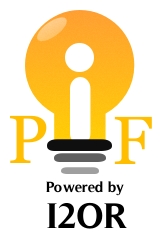FIRST REPORT: MOLECULAR IDENTIFICATION OF THE CAUSES OF ANTHRACNOSE DISEASE IN RAMBUTAN FRUITS IN BALI
Abstract
Anthracnose disease on post-harvest rambutan fruit is often found in traditional markets as well as freshly picked and post-harvest fruit. The disease really interferes with the appearance of the fruit, the skin color of the fruit is black and is not good for use as offerings or consumption. Molecular search results found that a 650 bp DNA fragment was successfully amplified from 5 fungal samples using universal primers ITS1/ITS4. The DNA samples resulting from the amplification are then used for the sequencing stage to determine the fungal species. Sequencing analysis confirmed that the identity of the fungus in the sample was Colletotrichum fructicola with 68-100% homology to several C. fructicola isolates and out groups in the genebank. Further phylogenetic analysis showed that C. fructicola isolates formed three groups. The C. fructicola_Bali isolate formed a group with isolates from Taiwan. The second group consists of isolates from China, while the third group consists of isolates from Japan. Meanwhile, outside the cluster there are 3 species of Colletotrichum including C. siamense, C. musae, and C. gloeosporioides. As an outgroup isolate, the Lasiodiplodiatheobromae isolate originating from Indonesia was used.
Downloads
References
2. Sivakumar D., R.S.W. Wijeratnam, R.L.C. Wijesundera and M. Abeysekera. 1997. Postharvest diseases of rambutan (Nephelium lappaceum) in the western province. J. Natn. Sci. Coun. Sri Lanka 25(4): 225-229.
3. Serrato-Diaz, L.M., L. I. Rivera-Vargas, R. Goenaga, E. D. Navarro, and R. D. French-Monar. 2017. First Report of Colletotrichum fructicola and C. queenslandicum Causing Fruit Rot of Rambutan (Nephelium lappaceum). Plant Disease 101(6).
4. Zakaria L. 2022. Fungal and oomycetes diseases of minor tropical fruit crops. Horticulture 8(323): 1-31.
5. Armand A., K. D. Hyde and R. S. Jayawardena. 2023. First Report of Colletotrichum fructicola Causing Fruit Rot and Leaf-Tip Dieback on Pineapple in Northern Thailand. Plants 12(971): 1-14.
6. Evallo E., Taguiam J.D., Bengoa J., Maghirang R., Balendres M.A. 2021. First report of Colletotrichum fructicola, causing anthracnose of Hylocereus plants, in the Philippines. – Czech Mycol. 73(1): 79–90.
7. Freeman S, Katan T, Shabi E.1998. Characterization of Colletotrichum species responsible for anthracnose diseases of various fruits. Plant Dis. 82:596–605.
8. Silva DN, Talhinhas P, Várzea V, et al..2012. Application of the Apn2/MAT locus to improve the systematics of the Colletotrichum gloeosporioides complex: an example from coffee (Coffea spp.) hosts. Mycologia.104:396–409.
9. Lima NB, Batista MV de A, De Morais MA Jr, et al..2013. Five Colletotrichum species are responsible for mango anthracnose in north-eastern Brazil. Fungal Divers.61:75–88.
10. Cristobal-Martínez AL, Yañez-Morales MJ, Solano-Vidal R, et al.. 2017. Diversity of Colletotrichum species in coffee (Coffea arabica) plantantions in Mexico. Eur J Plant Pathol.147:605–614.
11. Li H, Zhou G-Y, Liu J-A, et al..2016. Population genetic analyses of the fungal pathogen Colletotrichum fructicola on tea-oil trees in China. PLoS One.
12. Farr DF, Rossman AY. 2017. Fungal database: fungus–host distributions, U.S. National Fungus Collections, ARS, USDA [Internet].
13. Keith L., T. Matsumoto, K. Nishijima, M. Wall and M. Nagao. 2011. Field Survey and Fungicide Screening of Fungal Pathogens of Rambutan (Nephelium lappaceum) Fruit Rot in Hawaii. American Society for Horticultural Science 46(5): 730-735. Bellec, 2014
14. Phoulivong S. 2011. Colletotrichum, naming, control, resistance, biocontrol of weeds and current challenges. Current Research in Environmental & Applied Mycology p: 53-73.Serrato-Diaz et al., 2017
15. Norphanphoun C. and K. D. Hyde. 2023. First Report of Colletotrichum fructicola, C. rhizophorae sp. nov. and C. thailandica sp. nov. on Mangrove in Thailand. Pathogen 12: 1436.
16. Serrato-Diaz, L.M., L. I. Rivera-Vargas, R. Goenaga, E. D. Navarro, and R. D. French-Monar. 2017. First Report of Colletotrichum fructicola and C. queenslandicum Causing Fruit Rot of Rambutan (Nephelium lappaceum). The American Phytophathological Society (APS) Publication.
17. Norphanphoun C. and K. D. Hyde. 2023. First Report of Colletotrichum fructicola, C. rhizophorae sp. nov. and C. thailandica sp. nov. on Mangrove in Thailand. Pathogen 12: 1436.
18. Bragard C., K. Dehnen-Schmutz, F. Di Serio, P. Gonthier, M.-A. Jacques, J. A. J. Miret, A.F., A. MacLeod, C.S. Magnusson, P. Milonas, J. A Navas-Cortes, S. Parnell, R. Potting, Hans-Hermann Thulke, W. Van der Werf, A. V. Civera, J. Yuen, L. Zappala, Q. Migheli, I. Vloutoglou, C. Campese, A.Maiorano, F. Streissl and P. L. Reignault. 2021. Pest categorisation of Colletotrichum fructicola. EFSA Journal 19(8): 6803.
19. Doyle, J.J. and J.L. Doyle. 1987. A rapid DNA isolation procedure for small quantities of fresh leaf tissue. Phytochemical Bulletin, 19: 11-15.
Author(s) and co-author(s) jointly and severally represent and warrant that the Article is original with the author(s) and does not infringe any copyright or violate any other right of any third parties, and that the Article has not been published elsewhere. Author(s) agree to the terms that the GPH Journal will have the full right to remove the published article on any misconduct found in the published article.
























